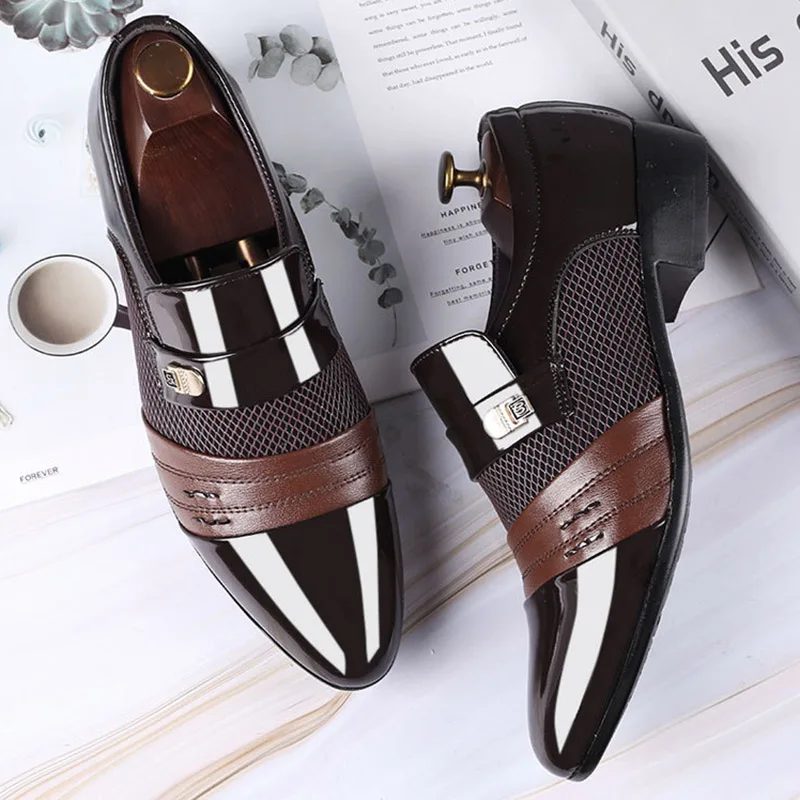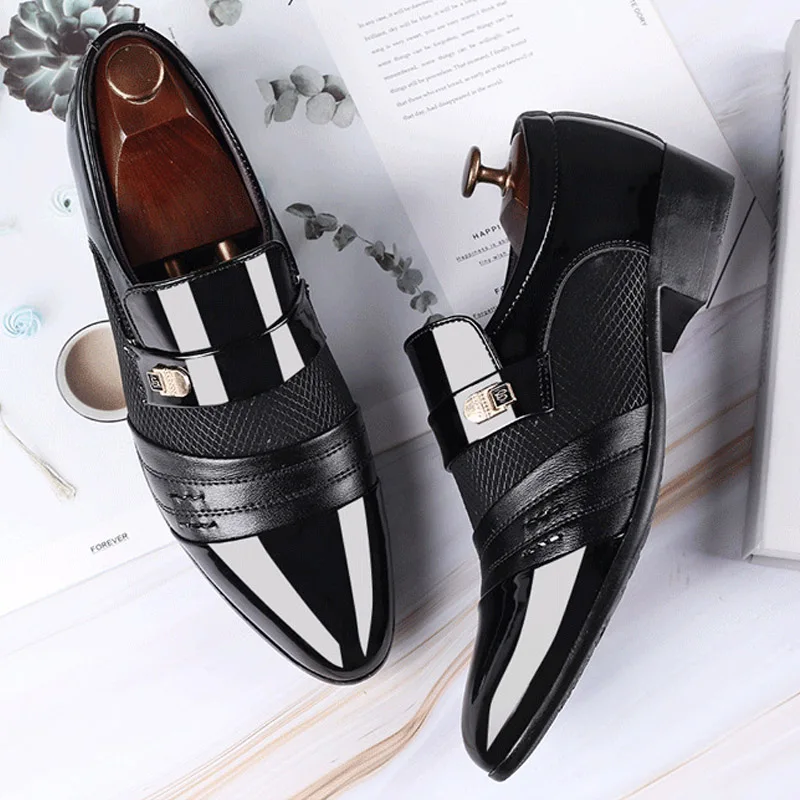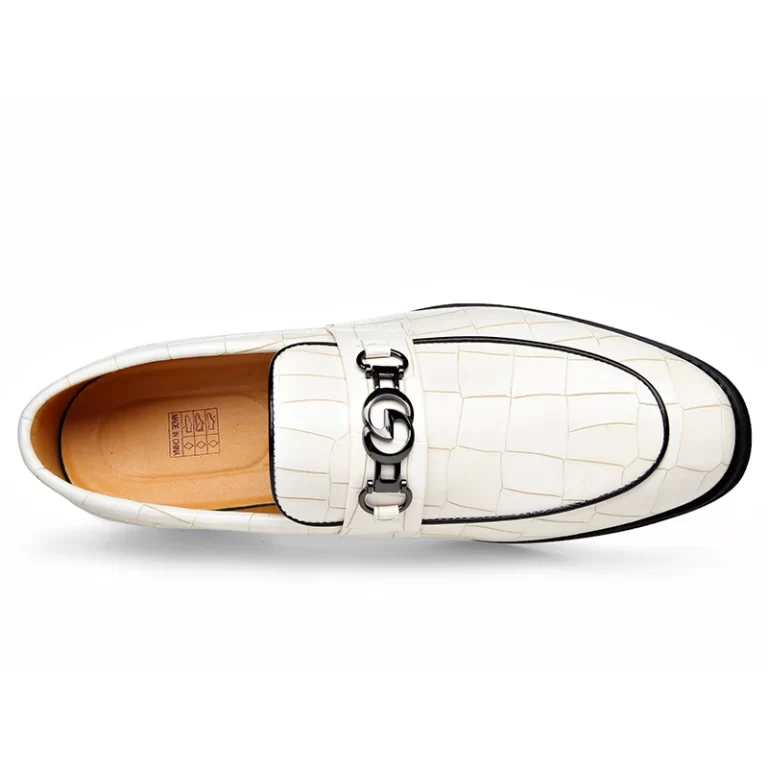The Importance of High-Quality Leather
Selecting high-quality leather is crucial in choosing leather dress shoes that will stand the test of time. High-quality leather not only offers supreme comfort and elegance but also ensures durability. Here are reasons why you should prioritize the quality of the leather:

- Resilience against wear and tear: Superior leather resists scuffs, stretches, and creases, maintaining its shape and appearance over years.
- Breathability: Good quality leather allows for air flow, reducing moisture and odor build-up. This feature is essential in preserving the shoe’s integrity and comfort.
- Refinement and appeal: High-quality leather develops a rich patina over time, enhancing the shoe’s aesthetic value with every wear. It’s what sets apart an exceptional pair of leather dress shoes from an average one.
- Better fit: As time passes, fine leather molds to your feet, providing a customized fit that is unique to each wearer.
When you invest in high-quality leather dress shoes, you’re not just buying a product; you’re investing in footwear that can accompany you for years. Always check the material details when purchasing, and remember that genuine leather will often indicate its grade and origin, key indicators of its quality.
Recognizing Genuine Leather Types
Recognizing genuine leather types is essential when choosing durable leather dress shoes. Leather comes in various qualities, each affecting the shoe’s longevity and appearance. Here are the primary types you should know:
- Full-grain leather: This is the highest quality leather. It includes the entire grain with minimal processing. Shoes made from full-grain leather are durable and develop a pleasing patina over time.
- Top-grain leather: This type is slightly thinner than full-grain. It’s processed to remove imperfections. Top-grain leather offers good durability and is more affordable than full-grain.
- Genuine leather: Often confused with high-quality leather, genuine leather is actually a lower grade. It comes from the bottom layers of the hide and is less durable.
- Bonded leather: This is the lowest quality leather, made from leftover scraps bonded together. It is less durable and does not age well.
Understanding these types can guide you in selecting leather dress shoes that offer both style and endurance. Always check the label for the type of leather and feel the material to assure its authenticity and quality.

Key Features of Durable Leather Shoes
In the quest for leather dress shoes that last, certain features stand out. Let’s dive into the key characteristics:
- Sturdy Soles: The foundation of any shoe, soles should be tough and well-constructed. Look for soles that are stitched, not just glued, to the upper part of the shoe.
- Robust Stitching: The stitching should be even and tight. It’s a sign of good craftsmanship and adds to the shoe’s durability.
- Heel Construction: A securely attached heel, often reinforced with nails or screws, ensures your shoes can withstand daily wear without coming apart.
- Padded Insoles: In addition to comfort, padded insoles help absorb impact and prolong the life of the shoes.
- Lining Material: A high-quality leather lining promotes breathability and provides additional structure to the shoe.
- Reinforced Toe and Heel Areas: These zones tend to wear out quickly. Reinforcement means your shoes will hold their shape and look better for longer.
When examining leather dress shoes, pay attention to these features. They are tell-tale signs of a shoe built to last. Remember, a well-crafted pair may cost more upfront, but its longevity means you save money over time.
Understanding Shoe Construction Techniques
When picking leather dress shoes that last, understanding shoe construction is key. Here are essential techniques used in making durable shoes:
- Goodyear Welting: This method involves stitching the sole to a strip of leather. This strip, called the welt, attaches to the shoe upper. Welting makes shoes easy to resole. This extends their longevity.
- Blake Stitching: Here, the outer sole is directly stitched to the upper. Shoes with Blake stitching are flexible and can be re-soled.
- Cementing: The soles are glued to the uppers. While less durable than stitching, this technique is cost-effective.
Each technique offers different benefits. Goodyear welting and Blake stitching ensure long-lasting wear. Cementing provides an affordable option with less durability. Choose based on your preference and the shoe’s intended use.
The Role of Proper Shoe Care in Longevity
Proper care is crucial for extending the life of leather dress shoes. Here’s why consistent maintenance matters:
- Regular Cleaning: Dirt and debris can degrade leather over time. Regular cleaning prevents this. Use a soft brush or cloth to gently remove any surface dirt.
- Conditioning: Leather needs moisture to stay flexible. Apply a quality leather conditioner every few months. This prevents cracks and keeps the leather supple.
- Proper Storage: Store leather dress shoes in a cool, dry place. Use shoe trees to maintain their shape and absorb moisture.
- Avoiding Water Damage: Leather is vulnerable to water. Dry wet shoes naturally, away from direct heat. Use water repellent sprays for an extra layer of protection.
- Timely Repairs: Address small issues like loose stitching or worn soles immediately. Delaying repairs can lead to bigger, costly problems.
By following these care steps, you ensure that your leather dress shoes remain in top condition. This not only makes them last longer but also saves money on frequent replacements.

Decoding the Leather Shoe Labels
Understanding leather shoe labels is key to selecting quality footwear. Here’s how to decode them effectively:
- Look for Leather Type: Labels should specify the type of leather. Check if it states ‘full-grain’, ‘top-grain’, ‘genuine’, or ‘bonded’.
- Grade Information: High-quality shoes often mention the leather grade. This helps assess durability and quality.
- Country of Origin: Some regions are known for superior leather. Find out where the leather comes from.
- Manufacturer Details: Reliable brands usually include their details. This can indicate the authenticity and standards maintained.
- Care Instructions: Proper care maintains longevity. Labels should guide on how to care for the shoes.
Reading these labels will help you understand what you’re investing in. Make informed decisions for your leather dress shoes.
Evaluating Brand Reputation and Customer Reviews
When looking for leather dress shoes that last, brand reputation and customer reviews can be pivotal. Here’s how they impact your choice:
- Brand History: A brand with a history in crafting leather shoes is often reliable. Look for companies with years of expertise in the leather industry.
- Positive Reviews: Good reviews signal satisfied customers. Check for mentions of durability, comfort, and quality of leather.
- Endorsements: If industry experts or fashion icons endorse a brand, it typically means the shoes are of high quality.
- Customer Experience: Check if reviews talk about customer service and after-sales support. Brands that value customers often produce quality shoes.
- Consistency: A brand with consistent high ratings across different models is a good sign. It shows they maintain quality across their range.
- Transparency: Brands that are open about their materials and manufacturing processes are more trustworthy. They likely take pride in their quality.
Evaluating a brand’s reputation and the customer feedback helps you anticipate the quality of the leather dress shoes you’re considering. It guides you towards making a choice that won’t disappoint over time. Remember, while not all expensive shoes guarantee longevity, established brands with positive reviews are often a safer bet for long-lasting wear.
The Cost vs. Quality Trade-off in Leather Shoes
When buying leather dress shoes, price and quality are inextricably linked. It’s important to understand that while higher costs often reflect superior materials and craftsmanship, this isn’t always the case. Here’s how to navigate this trade-off effectively:
- Assessing Material Quality: The price may be higher for shoes made with high-quality leather such as full-grain or top-grain. These materials promise longevity and better wear over time.
- Craftsmanship Evaluation: Skilled craftsmanship can also inflate the cost. Look for signs of good craftsmanship like even stitching and sturdy construction.
- Brand Premiums: Sometimes, you pay extra for the brand name. Investigate whether this premium correlates with better quality.
- Long-term Investment: Consider leather dress shoes as an investment. Quality shoes might cost more initially but save money by outlasting cheaper options.
Understanding these aspects can help you make an informed purchase, balancing cost against quality for the best value in leather dress shoes.


